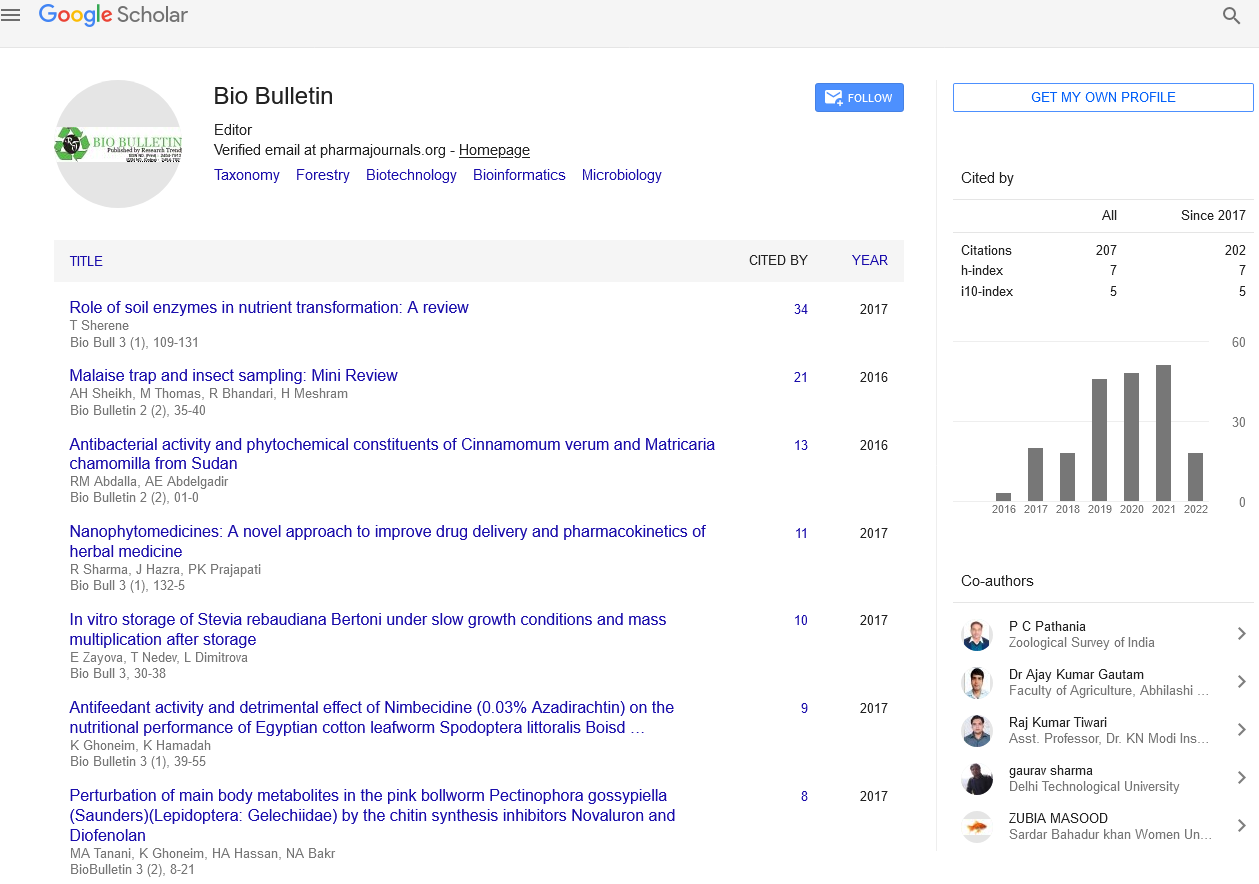Mapping Rare Biosphere
Commentary - (2021) Volume 7, Issue 2
Commentary
The use of cultivation-independent approaches to map microbial diversity. Uncovering eukaryotic diversity may now be limited not by access to samples or cost but rather by the supply of fulllength reference sequence data.
For several decades now, microbiologists have lived with the growing realization that the bulk of extant microbes aren't in our culture collections. In fact, our historical reliance on cultivation to spot and quantify microbes has resulted in our missing upwards of 95% of extant bacterial and archaeal diversity. Using cultivation-independent molecular approaches to spot microbes by genetic sequence specifically small subunit ribosomal RNA (SSU rRNA) sequences - we've begun to map truth microbial diversity of the world . This cultivationindependent approach to identifying diversity has recently benefited from the event of nextgeneration sequencing technology and a concomitant drop by sequencing costs. With reference to molecular surveys of microbial diversity in natural environmental samples, pyrosequencing approaches provide unprecedented sampling depth. Such deep sequencing has purportedly uncovered a rare and extensive biosphere of bacteria and archaea with a diversity that's perhaps several orders of magnitude greater than we had anticipated. And although there may are initial overestimations of the magnitude of the rare biosphere due to the intrinsic sequence error rate pyrosequencing produces, many rare and novel microbes are still being discovered at taxonomic levels starting from phyla to species.
Although we've observed protists within the wild for over three centuries and have classified them on the idea of morphology and motility, use of the fashionable molecular techniques that have provided insight into uncultivated bacterial/archaeal diversity has been limited in protists. Recent eukaryotespecific cultivation-independent studies to assess the extent of microbial eukaryotic diversity have identified many novel taxa at a variety of taxonomic levels. And although it's going to seem astounding to some that we might be unaware of phylum-level protistan taxa, the invention of novel eukaryotic SSU rRNA genes in natural environmental samples mirrors the gaps in our understanding of bacterial and archaeal diversity. Nearly whenever we've surveyed an environment using SSU rRNA cultivation-independent methods, we've found that it contains more protistan species than we all know from our culture collections or sequence databases.
Sequencing of rRNA genes to assess protistan diversity require PCR amplification. All PCR-based rRNA surveys believe eukaryotic-specific SSU rRNA primers that are, notably, derived from the prevailing (and limited) rRNA sequence data. Deep sequencing strategies will uncover new sequences, but as long as the regions from which the primers are designed are sufficiently sampled and sequenced for eukaryotic diversity. Because much of known cultivated (and uncultivated) eukaryotic diversity has been determined from PCR amplification of SSU rRNA using conserved sequence regions, we still have little actual sequence data at the extreme 5' and 3' ends of SSU rRNA. We can only search for sequences similar to those that are already known. How, then, can we design PCR primers that are both specific to eukaryotes but also broad enough to identify unknown groups? Even in this study, in which the V9 region at the extreme 3' end of SSU rRNA was PCR amplified and sequenced, there could be more unamplified and thus hidden eukaryotic diversity. As we continue to deeply sequence more variable regions we might find that we have again underestimated eukaryotic diversity. Additional sequencing of genomes from cultivated protists or identification of eukaryotic rRNA sequences from directly sequenced metagenomic studies could provide more reference sequences.
Author Info
Pyush Samal1*, Tud Lei2 and Shankar Chillar32Department of Zoology, Govt. Higher Secondary School, Litter (J&K), India
3Department of Environmental Science, Govt. Degree College, Bijbehara (J&K), India
Received: 15-Jun-2021 Accepted: 29-Jun-2021 Published: 06-Jul-2021
Copyright: This is an open access article distributed under the terms of the Creative Commons Attribution License, which permits unrestricted use, distribution, and reproduction in any medium, provided the original work is properly cited.

